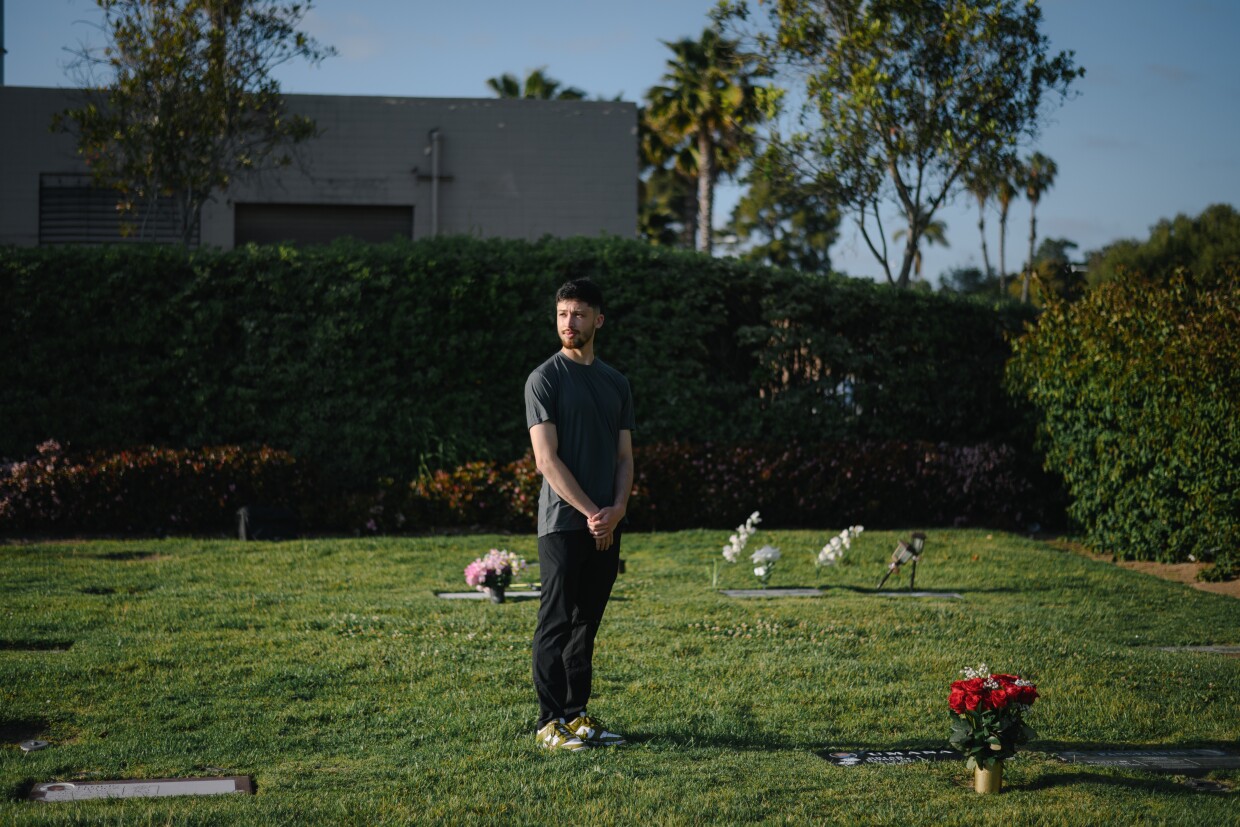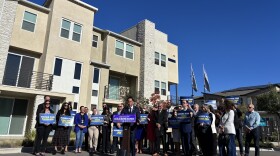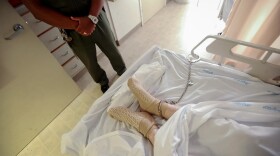The cemetery is quiet and tucked away. On spring evenings, the sun spills across the grass, casting long shadows behind the trees.
Roberto Umana comes every week to change the flowers. He places them in a vase, which he spray-painted bright gold. He wanted his older brother Brian’s gravestone to have some color.
Four years ago, Brian was shot and killed by two National City police officers in the early hours of the morning. The 28-year-old was barefoot and holding a machete. Roberto and his attorneys say Brian was in the middle of a mental health crisis, triggered by their father’s death in 2013.
It was the third time in four years that National City police confronted someone in crisis and that encounter turned fatal. In 2018, a Black man named Earl McNeil stopped breathing after officers restrained him using a full body restraint device and a mesh face-covering. One year later, a white man named Tony Wilson died after officers pressed him against the ground and tased him five times.
Amid those deaths, elected officials in National City have pushed for changes to their police department’s response to mental health calls. City officials championed the County of San Diego’s crisis responder program and launched their own city team of unarmed caseworkers to handle homelessness-related calls.
But Roberto, 25, and other family members felt that city leaders were not doing enough. In 2022, Roberto filed a civil rights lawsuit in federal court, arguing that officers failed to deescalate the situation and used excessive force. Wilson and McNeil’s families also filed civil rights lawsuits against the city.
In all three cases, National City officials decided to pay to settle the lawsuits rather than allow them to go before a jury. This past February, city officials paid Roberto and his family a $1 million settlement.
Now, that string of settlements has reignited questions about how National City officials oversee policing — and whether the changes they’ve made will be enough to prevent future fatal encounters with officers.
“I don’t want people to forget my brother,” Roberto said. “His story is one of many.”
'A normal big brother'
As Roberto tells it, Brian was a quiet person. He enjoyed comedy and collecting sneakers like Nike Dunks and Blazers.
Like any younger sibling, Roberto looked up to Brian. When Brian started skateboarding, so did Roberto. When Brian got his ears pierced, Roberto wanted to do the same. They spent a lot of time together and would go out to the beach and walk near Sunset Cliffs.
The brothers grew up largely in the City Heights neighborhood of San Diego. But during school breaks, they would often travel to stay with their father in Los Angeles. Brian spent more time with their father than Roberto did, even moving to L.A. at one point.
Brian was there in 2013 when their father got sick with pneumonia. He was “old-school” and didn’t like doctors, Roberto said. Their father wouldn’t go to the hospital for a medical diagnosis and died soon after.
Watching their father pass away deeply affected Brian.
“It messed with his psyche,” Roberto said. “”He was just never the same.”
Brian moved back to San Diego, where he continued to grapple with his father’s loss. He was diagnosed with bipolar disorder and treated multiple times for depression at Paradise Valley Hospital, Roberto said
In 2016, Brian and his high school sweetheart had a daughter together. Five years later, they moved to National City.
On a rainy morning in October 2021, dispatchers received a call about a person breaking into a storage facility near Sweetwater Bike Trail, according to a report released later by the San Diego County District Attorney’s office. The caller said the person was holding a blade and had left on foot.
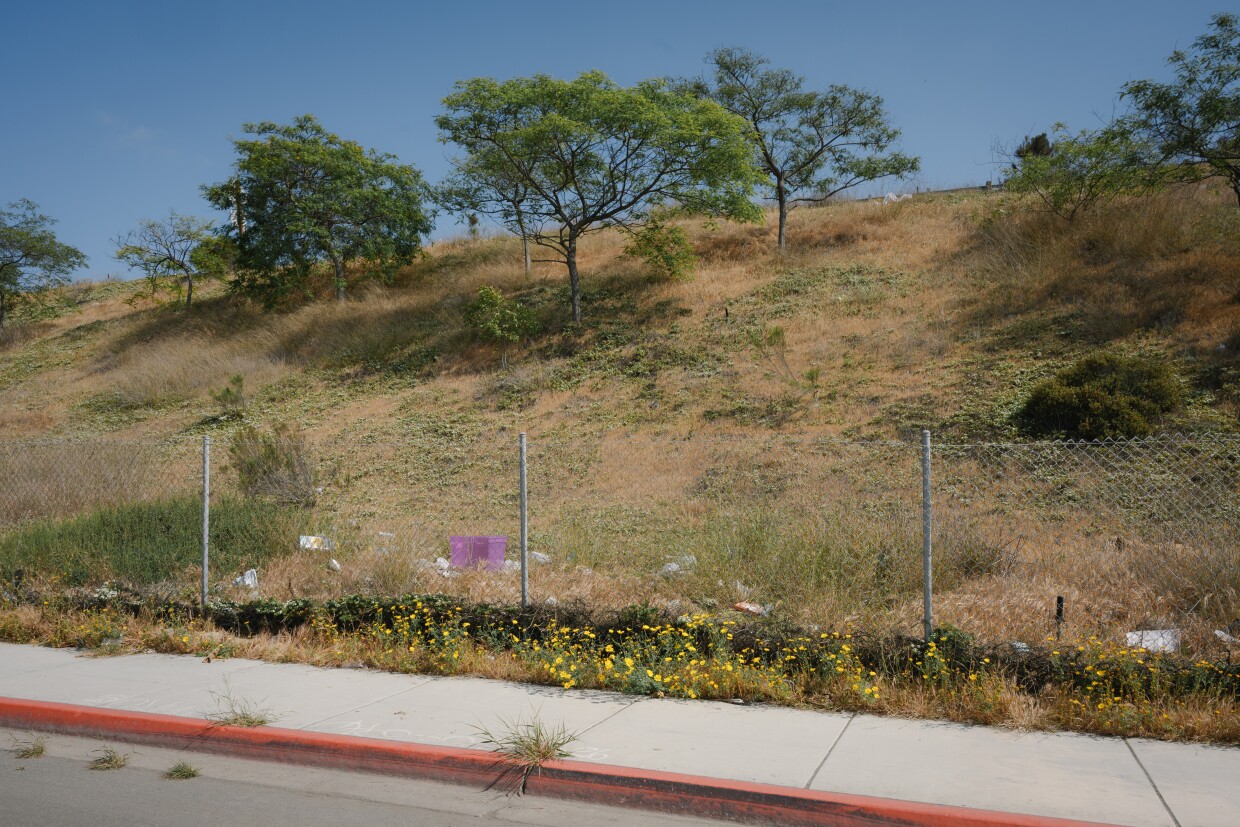
Three National City police officers responded, body cameras recording. They found Brian pacing along the sidewalk nearby, holding a machete in his right hand. Despite the drizzle, he was barefoot.
The body camera footage shows officers surrounding Brian in their squad cars, and then turning their headlights on him. They yelled at him to drop the machete and threatened to release their police dog. Brian turned to walk away from them, and two of the officers advanced, one firing a taser. Brian turned towards them and raised the machete behind his head.
Two officers, Evan Davis and Michael Sportelli, opened fire — Davis using a handgun, Sportelli with a high-powered AR-15 rifle. They struck Brian eight times, according to the San Diego District Attorney’s report. In the video, Brian freezes and topples from the sidewalk into the road.
A spokesperson for the National City Police Department declined repeated interview requests for this story.
County investigators chose not to bring criminal charges against the officers. In a 2023 report, San Diego County District Attorney Summer Stephan said Brian had threatened their safety, justifying the force they used.
But to Roberto, the officers should have seen that Brian was mentally unwell. He felt that the police made little effort to deescalate the situation. If the officers had handled things differently, maybe his brother would still be alive.
“The signs were there,” Roberto said. “He was not okay.”
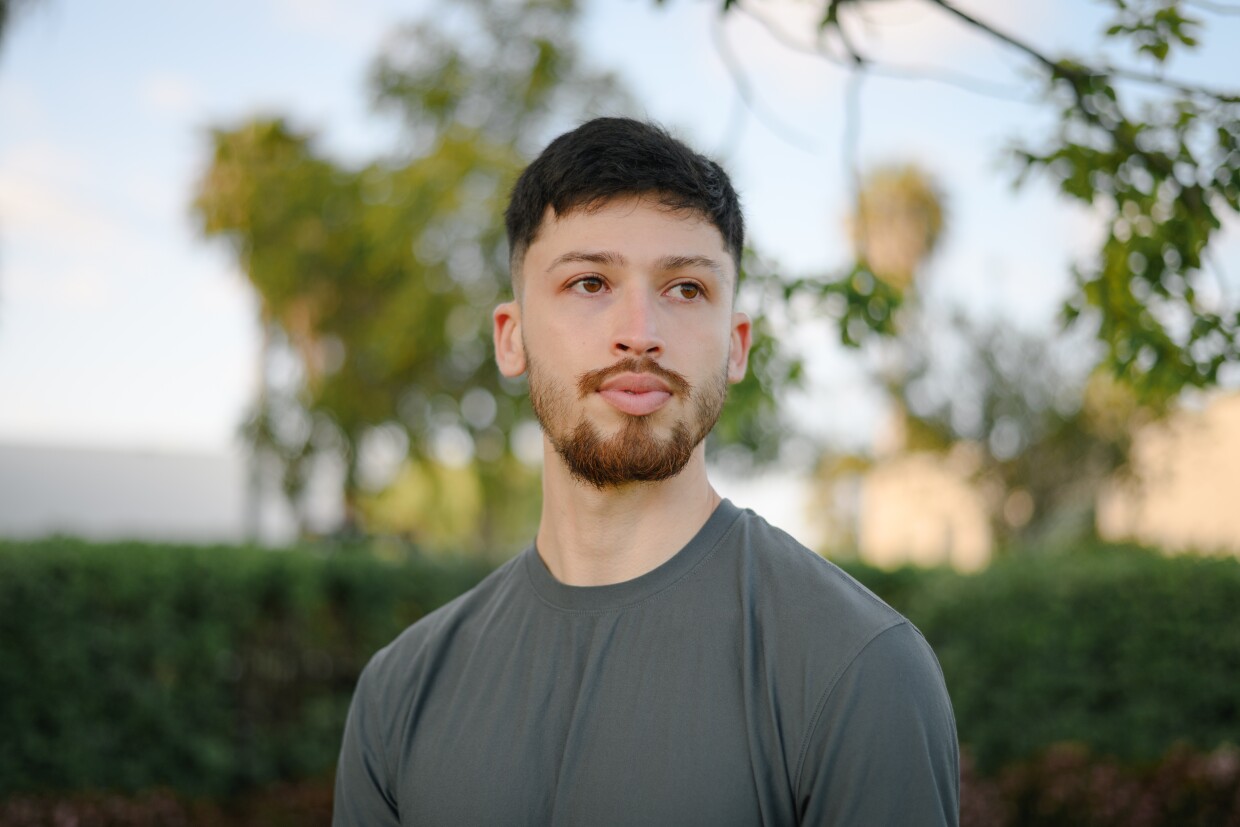
Umana, Wilson and McNeil
The National City Police Department has faced allegations of brutality going back decades. The South Bay city is largely working class, and more than 65% of its residents identify as Latino. In the 1980s, the FBI opened an investigation after dozens of Latino residents filed complaints that accused officers of excessive force, harassment and entering homes without a warrant.
In one case, the LA Times reported, officers from National City used a flashlight to beat a person accused of stealing a car — an incident that even led officers in neighboring San Diego to file an internal excessive force complaint.
But it wasn’t until 2018 that the department came under scrutiny for its handling of mental health crises in particular.
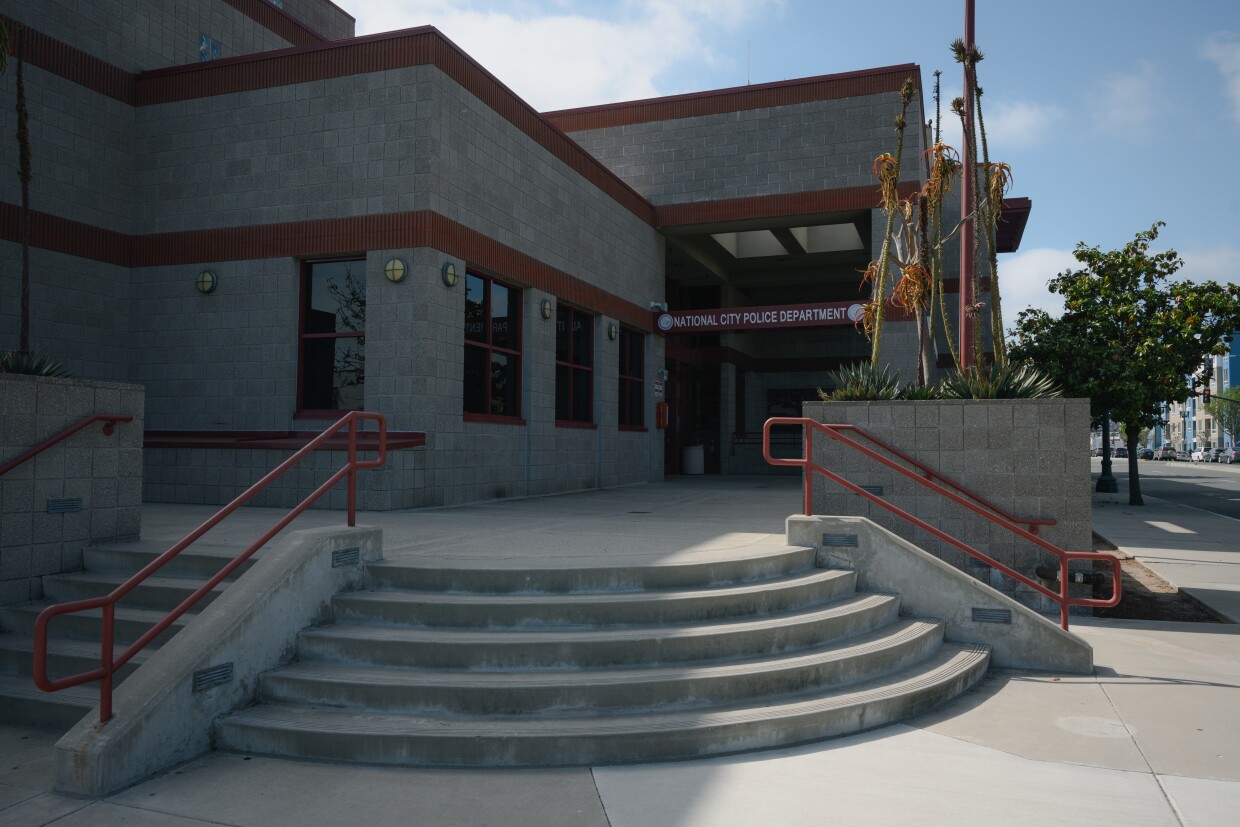
That May, dispatchers received a call from a man named Earl McNeil. He was calling from the phone right outside the National City Police Station. McNeil said he was high and wanted to turn himself in.
Officers arrived and arrested McNeil, a Black man, on suspicion of using controlled substances. They used a WRAP restraining device to bind his arms and legs and covered his head with a mesh hood, or “spit sock,” before departing for a county jail facility. On the drive, despite the restraints, police said McNeil began hurting himself.
At the jail, the officers called paramedics. McNeil stopped breathing and went into a coma. Two weeks later, he was taken off life support and pronounced dead.
National City faced public fury over McNeil’s death. Protestors disrupted city council meetings and demanded that then-Police Chief Manuel Rodriguez resign. They were confronted by officers in riot gear.
In particular, a coalition of San Diego civil rights groups questioned whether the officers had used deescalation tactics before physically restraining McNeil. They also questioned whether officers had called for support from trained mental health professionals.
McNeil’s state “should have signaled to officers that what he needed was medical and/or mental health intervention and not detention in jail,” the groups said in a statement.

One year later, a second man died in the custody of National City police: Tony Wilson.
Wilson, a white man, was standing on the porch of a home on East 8th Street when two officers approached him. Several 911 callers had reported that a man was trying to break into a building in the area, according to a later report by the District Attorney’s office.
The officers attempted to arrest Wilson, who stopped breathing while they were restraining him. Paramedics took Wilson to the hospital, but he never woke up and was declared dead two weeks later.
That case drew little attention at first. But in 2020, NBC7 obtained body camera footage of Wilson’s arrest. The video showed Wilson dropping to his knees with his hands raised as officers approached him. The officers forced Wilson against the ground as he cried out, yelling at him to put his hands behind his back. One of the officers, Jonathan Taylor, pressed his taser into Wilson’s shoulder and fired it repeatedly.
Members of the San Diego branch of the NAACP, the national civil rights organization, said the video was a clear display of excessive force. They said it showed a need for more trained mental health responders.
“National City is the 2nd oldest Police Department in the County,” they said in a statement. “They have a history of interactions with unarmed people in mental crisis ending in death.”
DA Stephan chose not to bring criminal charges against officers involved in both cases. But the families of both McNeil and Wilson filed federal civil rights lawsuits against National City.
“There has to be transparency,” Sophia Bhandari, Wilson’s oldest daughter, told KPBS in April. “That's the only way to fix a broken system.”

'I just wanted the truth'
In the weeks after Brian’s funeral, Roberto began watching news coverage of his killing. Much of it focused on the machete Brian was holding when he died. Roberto remembers one article showing a short clip of Brian turning towards the officers and raising the blade.
Roberto says that focus didn’t sit right with him. He didn’t feel like people were paying enough attention to the fact that Brian had been out barefoot in the rain at 4 a.m. — clearly, in Roberto’s eyes, in the middle of a mental health crisis.
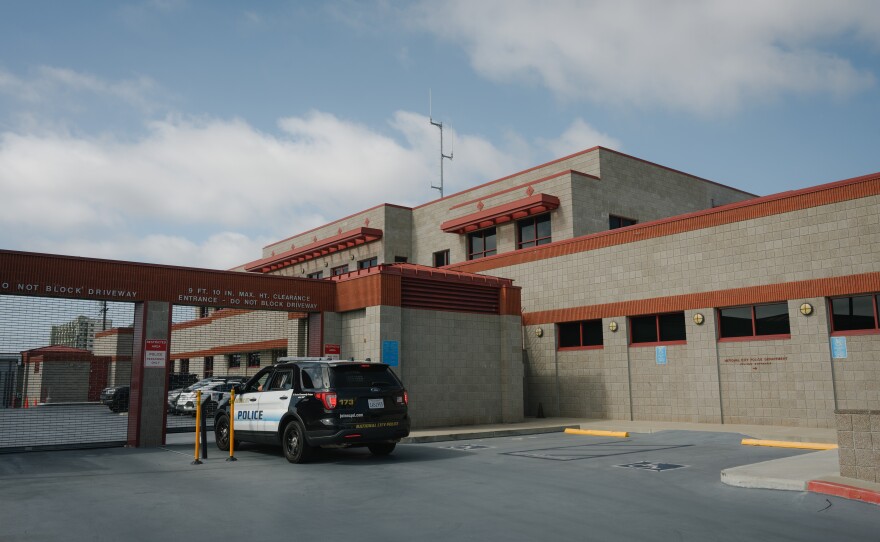
“Did the officers do right?” he remembers thinking. “That was my first question.”
Roberto started looking for an attorney. But many turned him down, he said, claiming that his case would be too difficult to win. Roberto recalled calling 20 attorneys in a single day, only to be rebuffed by each one.
Roberto said he reached out to the National City police department and the District Attorney’s office, asking for body camera footage from the shooting and other public records. He began researching the history of the department, examining Wilson and McNeil’s deaths and other incidents, like when an officer was fired for sending racist text messages.
“I just wanted the truth,” he said.
Finally, Roberto spoke with an attorney, Emily Howe, who would take his case. In December 2022, more than a year after Brian’s killing, they filed a federal civil rights lawsuit of their own. In it, they accused the department of using excessive force and escalating the encounter despite the signs that Brian was in crisis.
A different way to respond
Meanwhile, National City leaders were responding to calls from residents to limit how and when police respond to people in a mental health crisis.
The three fatal encounters came as Black Lives Matter protests swelled across the country, drawing a nationwide spotlight to police violence and its disproportionate impact on Black Americans and other people of color.
In particular, the movement questioned whether armed officers — who often have little training when it comes to mental illness — were equipped to respond to someone in crisis.
The city already had one type of trained mental health responder in place dating back to before McNeil’s death: the county’s Psychiatric Emergency Response Team, or PERT.
PERT deploys trained clinicians alongside armed police officers and has been active in parts of the county since 1996. But the county has struggled to fully staff the program, and response teams are not on-call at all hours of the day.
Marcus Bush, the vice mayor of National City, told KPBS last month that he believed that PERT responders were not on duty when police responded to Earl McNeil or Tony Wilson, although he wasn’t certain. A spokesperson for the police department would not confirm PERT’s availability in all three cases.
In June 2021, city officials partnered with the County of San Diego to deploy a new type of crisis response team in National City.
These new teams are known as Mobile Crisis Response Teams, or MCRTs. Their responders have similar clinical training as PERT teams, but they do not include any armed officers.
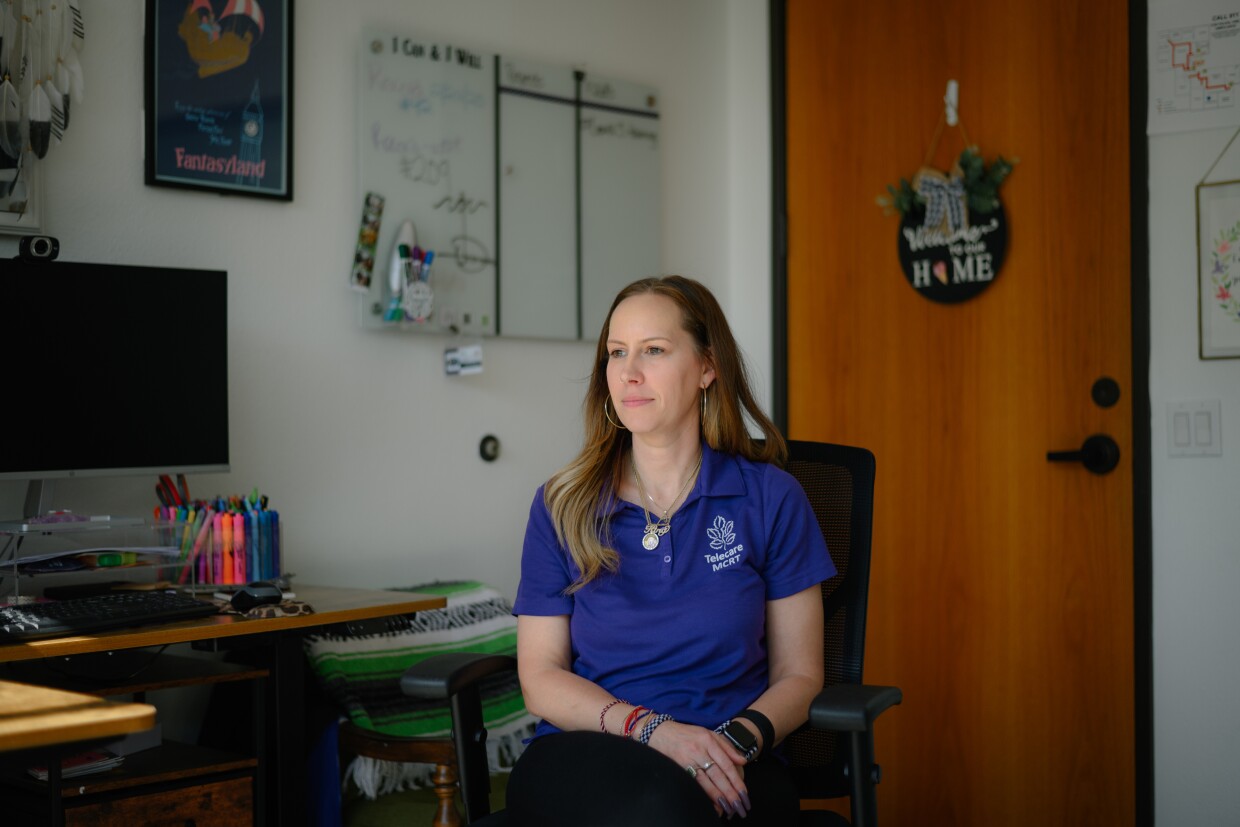
National City was one of the first two cities in the county, along with Chula Vista, to sign up. At the time, city officials, including then-Police Chief Jose Tellez, called it an important step.
“I’m very happy to know that National City will be at the forefront of having this come out,” said then-Councilmember Mona Rios, at a City Council meeting in June 2021.
In 2023, the city also launched a small team of trained caseworkers to respond to homelessness-related calls.
The Homeless Outreach and Mobile Engagement (HOME) team is made up of two roving caseworkers trained to work with people who have experienced trauma. They coordinate with the police department, but their team does not include armed officers either. The program was inspired by a landmark crisis response program in Oregon.
It is still early to say how the programs are working, but data and interviews with administrators indicate positive results so far.
“We're doubling our call volume every year,” said Bre Lane, a program administrator with Telecare, the company contracted to run the MCRT program in most of the county. “It means law enforcement's accessing us more for people they're coming in contact with.”
Between June 2023 and 2024, the MCRT teams responded to more than 90 calls in National City alone. A fifth of those calls were redirected from police and to their teams by dispatchers.
During the HOME team’s first year, they responded to over 200 calls redirected by police, according to city data released last September.

Not asking the right questions
Despite these changes, there are still questions about whether city leaders are doing enough to prevent future in-custody deaths.
In September 2021, just a month before police officers shot and killed Brian Umana, National City reached a settlement with Earl McNeil’s family, paying them $300,000 to resolve their case. Last year, Tony Wilson’s family also settled with the city for $350,000. This spring, Roberto Umana won his case as well.
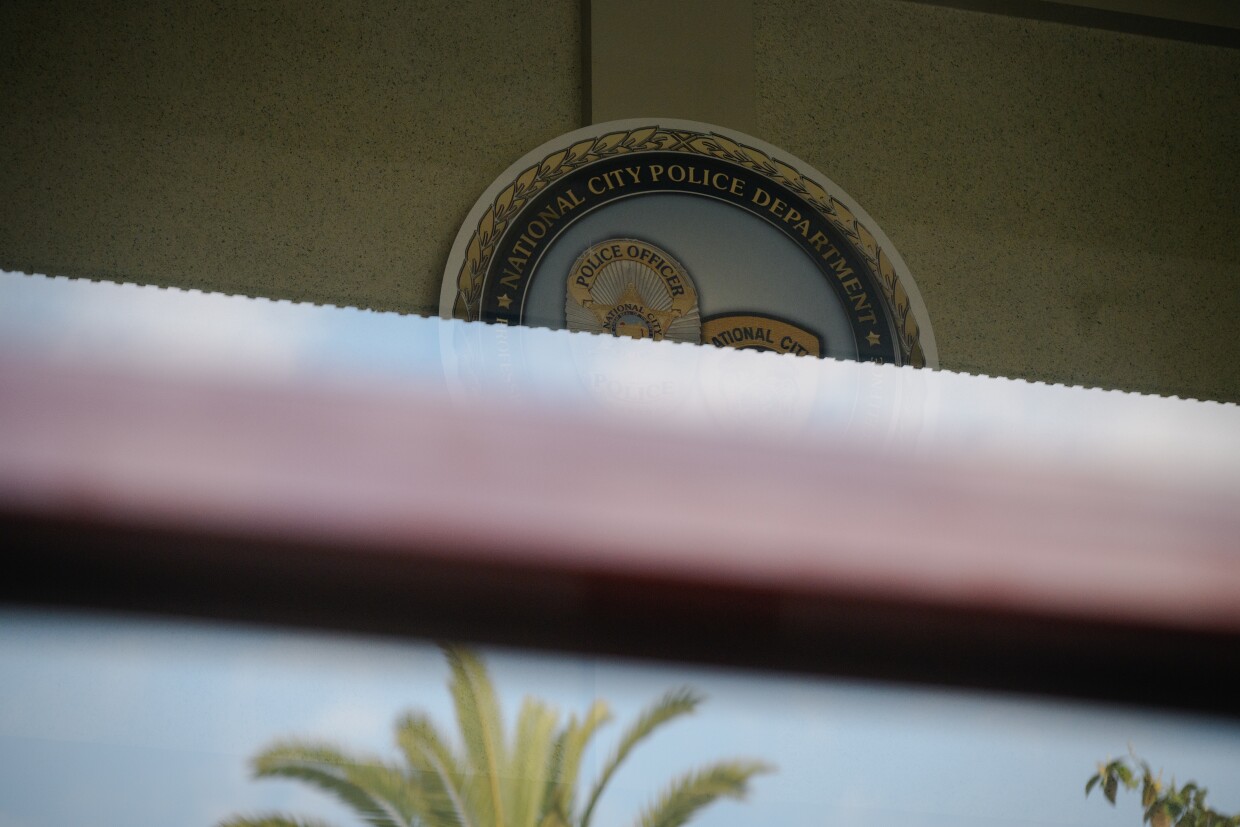
Joanna Schwartz, a professor of law at UCLA and an expert on police misconduct litigation, said those settlements should be prompting the National City Police Department to ask new questions about their practices.
The fact that the city settled the cases doesn’t necessarily mean they felt they would lose at trial, Schwartz said. Attorneys on both sides of the case do consider how likely they are to win, but there are many other factors that can influence the decision to settle and the final amount.
But what the settlements do mean, Schwartz said, is that the police department and city officials should be closely examining the information that emerged in court — combing through depositions and documents, and thinking about ways they could better supervise their officers or change their policies.
“You’re talking about three people who lost their lives,” she said. “If there was an airplane crash and three people died, you would be opening up that black box to try to figure out what happened and what went wrong.”
But police officials won’t say what lessons they are taking away from these cases and whether they have made any changes to their policies.
Paul Hernandez, a spokesperson for the department, declined repeated requests for an interview with the department’s leadership to understand how the department is examining the settlements.
“There will be no interview with command staff,” Hernandez told KPBS over email in late April. “Any further comment would come from the City Attorney’s office.”
City Attorney Barry Schultz did not respond to multiple emailed requests. Mayor Ron Morrison also did not respond to multiple requests, and City Councilmembers Ditas Yamane and Luz Molina did not agree to be interviewed for this story.
But at least one top city official thinks National City’s elected leaders are not asking the questions Schwartz said they should be.
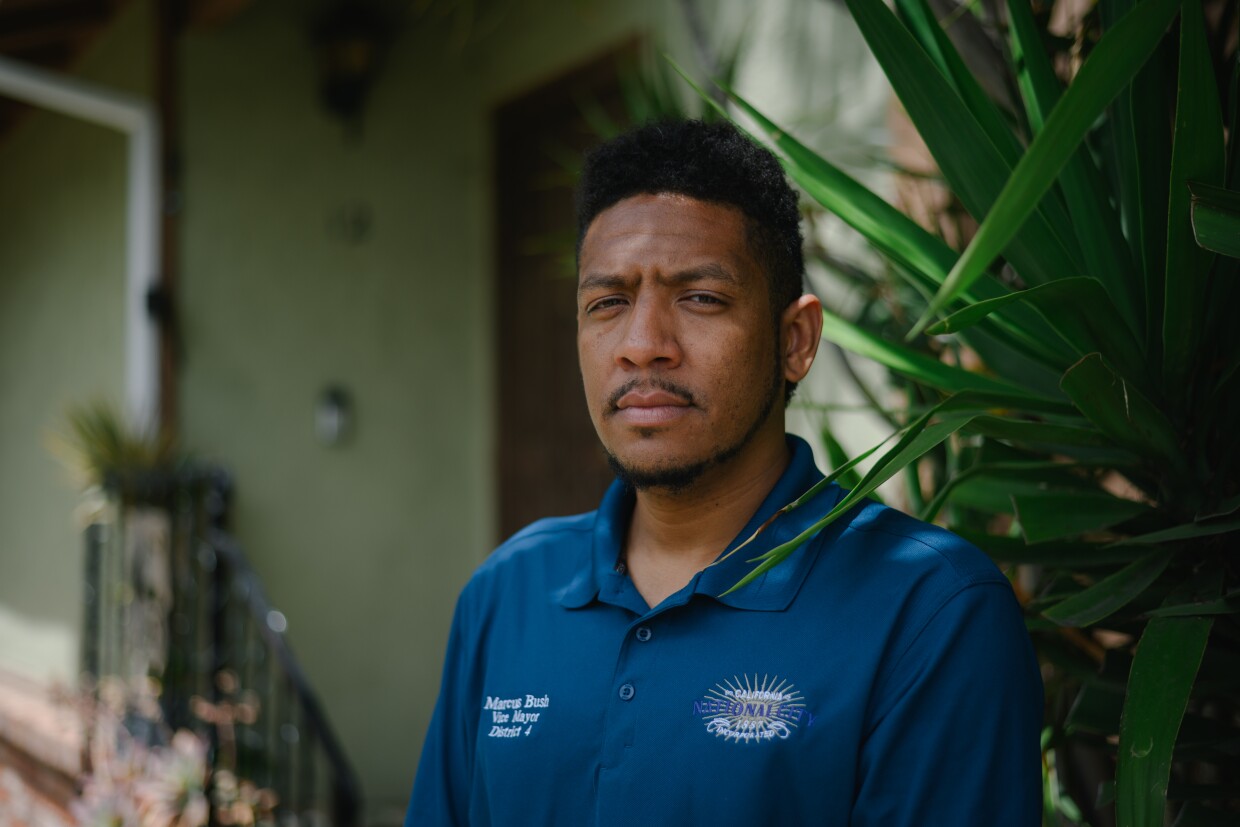
In an interview with KPBS, Vice Mayor Bush said he believes the police department has made strides when it comes to building trust. But he said the City Council has done little to discuss these cases openly and consider concrete policy changes as a result.
“In our history, in the organization, it's been very kind of, ‘sweep under the rug, it wasn't our fault, let's just forget about it,” he said, referring to the City Council. “There's a lack of accountability there, so that the cycle kind of repeats.”
That fits a pattern that Schwartz has observed in her research.
“Local governments all too often treat these payments as the cost of doing business,” she said. “Often law enforcement agencies don't even do that first step of trying to learn from the lawsuits that have been brought against them.”
Bush said he hopes to change that pattern. In particular, he wants to expand the role of the city’s citizen oversight board, the Community and Police Relations Commission.
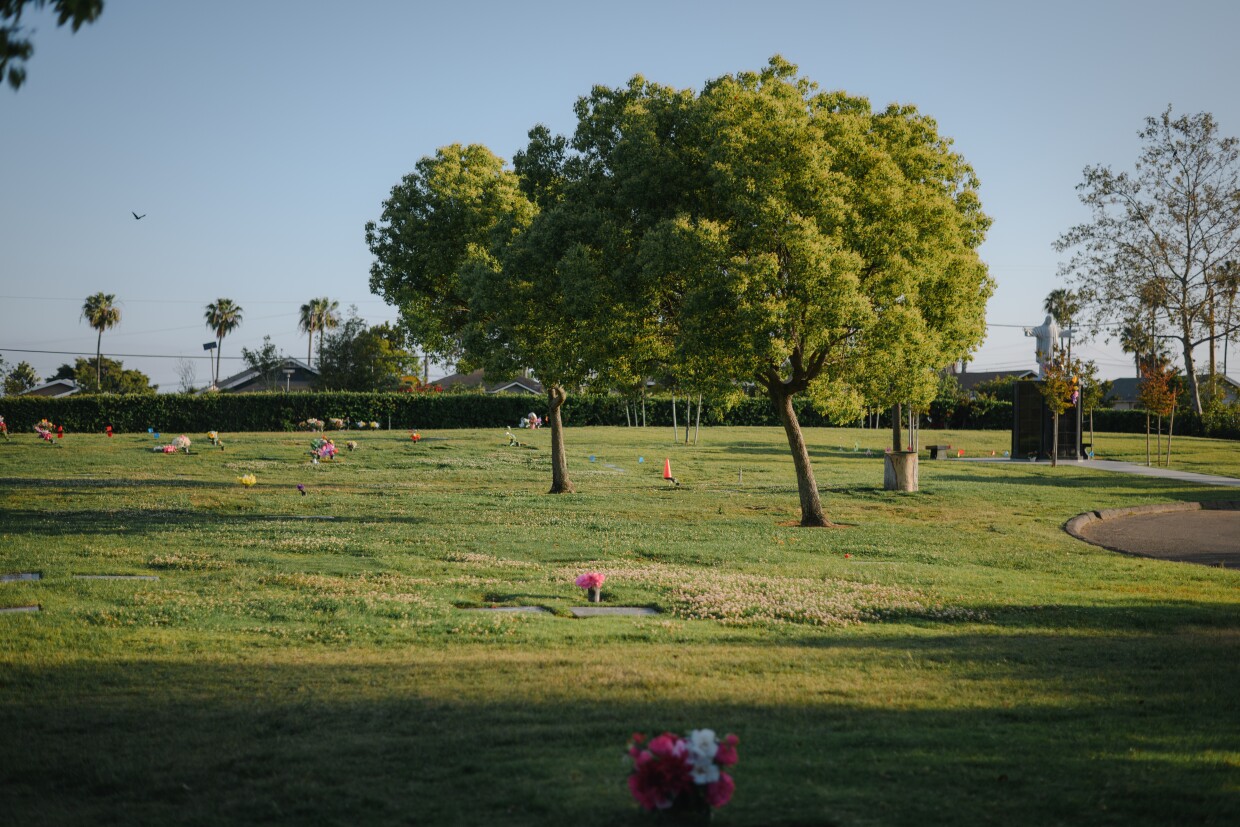
'The side that people don’t really see'
The settlement has changed some things for Roberto.
The cemetery where Brian is buried has been a place of anger and hurt for nearly four years now. But when he visited in April, Roberto said he felt a new calm.
Standing before his brother’s grave, Roberto said his family’s lives had been upended by his brother’s killing. He had set everything aside to seek answers, including his career as a boxer and much of his personal life. Their family now visits the cemetery to celebrate birthdays and holidays.
But sharing their experience is important, Roberto said, because it represents what is left behind in the aftermath of a police killing.
“I just wanted to show the side that people don't really see,” he said.
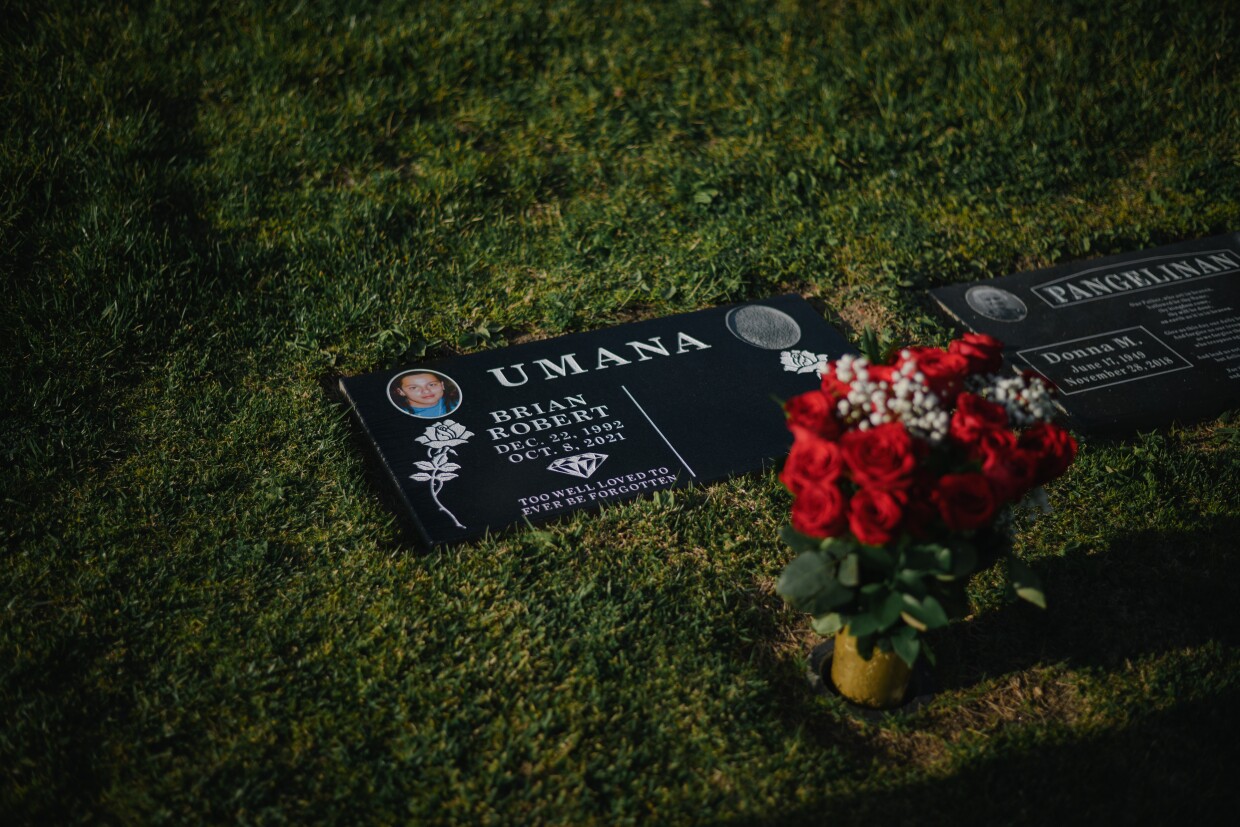
Despite the settlement, Roberto does still worry that National City has not changed enough to prevent more fatal encounters between police and people in crisis.
But he does feel like he is finally ready to move forward with his life. Roberto said he is especially looking forward to helping take care of his niece, Brian’s daughter.
He hopes she will be proud of him.

